Shavua tov, everyone. Covid has brought us a number of Back to the Future moments. The Board of Kolot Mayim decided this past week to primarily return to Zoom for delivery of our Shabbat services. The Hybrid model – providing a Zoom of in-person services as/is complicated and our in-person numbers were just too low – to the point where justifying the expenditure of effort was not possible. We will be holding an in-person service once a month for everyone who feels able to attend – followed by a light lunch. Meanwhile let’s think of other ways that we can encourage our members to gather in small bubbles – here are some ideas generated from last week’s Shabbat service.
Ideas for getting together
Shabbat – On Friday nights and Saturday mornings, invite a few people to join you for a Shabbat meal and enjoy singing together while following the Zoom service.
On Shabbat afternoons – arrange to have tea and a visit – maybe every other week.
Arrange for Zoom or phone visits Friday morning/early afternoons to check in with friends – and maybe people you don’t know so well yet.
Let’s make our Zoom services as interactive as possible.
Help with services:
Want to learn to sing one of the prayers for Friday evening or Shabbat morning? Call Rabbi Lynn.
Love music? Help the rabbi locate Jewish music videos to play on Zoom.
Give a d’var on the weekly parashah – contact Rabbi Lynn for ideas.
Want to help with our once monthly in person service?
We need a volunteer to organize a rota of people to bring the following: Bring paper bowls, a crockpot of vegetarian soup, bread (Challah/Pita) and dessert.
We have an opportunity to build Shabbat connections and well beyond. I am looking forward to hearing from you about your ideas and how you might like to participate as we continue to build our kehillah.
Kol tuv,
Rabbi Lynn


Vayigash
December 6, 2021 by Rabbi Lynn Greenhough • From the Rabbi's Desk
Hannukah is over, and now we hold sweet memories of eating with friends and families over these days of lighting candles together. Last week in our Torah portion we read how Joseph prepared a table for his brothers; this week he finally shared the news that he was, in fact, their brother. He promised them bread, that they would eat, even in such a time of famine.
It is not insignificant that Joseph prepared a meal to help ready himself to share this truth. There is something profoundly fundamental about sharing our food, even if it is the most simple of meals. Even as Abraham ran forward to welcome the three men he spied whilst sitting in his tent, Joseph knew that to honour guests with food – no matter whom they may be – is in no small way honouring God.
Food, be it bread and salt, or the most sumptuous of feasts, plays such a role in our Torah and in our tradition. Blessings accompany our eating as we acknowledge how eating binds us in sacred relationship with God and with those we love.
All the more do we want to share food together at Kolot Mayim. Each Shabbat morning (first of every month) when we meet in person, we now share food. More and more of us are coming and staying, hungry not so much for edible delicacies, but for nourishment of company. Food is a vehicle of connection to the blessing of company and companionship. Come and join us on January 1st (that other New Year), as we share prayer, song and food together.
Kol tuv,
Rabbi Lynn